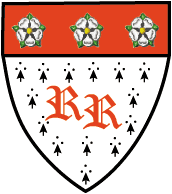


|
|
|
|
The ancient settlement of Fulston, also includes the hill settlements of Deershaw, Ebsonhouse, Hollinhouse, Mearhouse and Melthamhouse. All these settlements are in the Parish of Kirkburton. Kirkburton itself being only about three miles to the East. All these places have well documented associations with the name Robucke dating back to at least the 16th century. One such family is that of George Robucke, evidenced by Wills and entries in the Kirkburton Parish Registers. This large extended family occupied an area stretching at least from Fulston to Mearhouse. Click on the link to see the family tree of George Robucke from 1550 to 1700. From this chart are further links to the Wills. The hill settlements of Fulston have long been overtaken by the town of New Mill, in the valley bottom. To see photographs of the Fulston area click on the thumbnails.
|
|
|
|
|
|
The copyright of this website 2002 to 2008 belongs to the web owner. No part of this website may be sold, used for commercial
purposes or republished in any form, either in print, electronically
or otherwise, without the express permission of the web owner.
Any person, company or organisation found to be in breach of
the foregoing will be liable to prosecution. |

